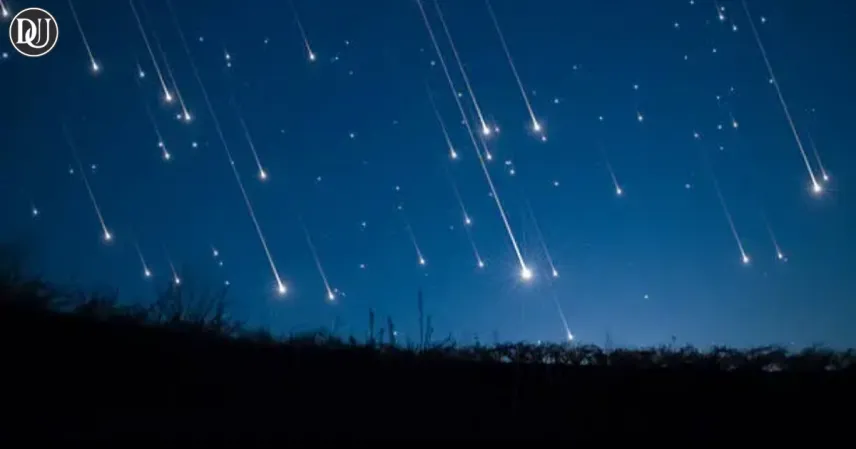Did you know there are actually a couple of meteor showers peaking tonight? Random thought, I know, but it just popped into my head while staring out the window. Like, imagine trying to catch a glimpse of some shooting stars, and then you find out it’s not just one, but multiple cosmic events happening simultaneously. It’s pretty wild, right?
Apparently, you've got the Delta Aquarids and the Alpha Capricornids putting on a show, at least according to what I saw floating around online. And get this, some early activity from the Perseids might even be visible, though that one usually hits its peak a bit later in August. Still, the idea of three potential showers in one night? That’s kind of rare, honestly. The Twin Falls area, for instance, is specifically prepping for the Delta Aquarids and Alpha Capricornids, which makes sense since they’re both active right now. Makes you wonder if anyone’s actually out there watching right now.
✨ What's Up There Tonight?
The Delta Aquarids are often described as a fairly consistent shower, you know, not super bright but reliable. They usually kick off in mid-July and run through to late August, peaking around now. People say they produce about 10-20 meteors per hour under ideal conditions. Not the most spectacular, maybe, but still cool to spot. They come from the debris of a comet called 96P/Machholz. Hard to believe, honestly, that we’re just passing through dust trails from a comet every year, like clockwork. That’s a bizarre thought at 2 AM.
Then you’ve got the Alpha Capricornids, which apparently are less frequent but tend to produce these really bright, yellowish fireballs. I’ve always thought that sounds way cooler than just a quick streak of light. These originate from another comet, 169P/NEAT. So, basically, we’re dealing with two different cometary debris fields hitting our atmosphere. The thought of that is genuinely mind-bending. It's like cosmic litter, but way more beautiful.
🔭 Catching Those Faint Streaks
Honestly, trying to spot these things from, say, a city balcony is probably a lost cause. You really need to get away from light pollution. I mean, common sense, right? Streetlights, building lights, even a distant glow from a town can completely wash out the fainter meteors. The best bet is always a really dark spot, far from any major population centers. You know, like, a national park, or just out in the middle of nowhere if you can swing it. It just makes such a difference.
Timing is also a thing. Most meteor showers are better to view after midnight, which, well, it's 2 AM so we're right in the sweet spot for that. The Earth is rotating into the meteor stream, so more particles hit the atmosphere from that direction. Also, generally, the later it gets, the higher the radiant point of the shower is in the sky, making it easier to see. Basically, you want the shower's origin point to be high above the horizon. Could be wrong about the exact science there, but that’s been my experience.
🌌 Beyond the City Lights
Finding a good viewing spot is half the battle, really. You can check local astronomy clubs or even just do a quick search for "dark sky preserves" near you. Sometimes, even a rural farm field can work. Just make sure you’ve got permission, obviously. Packing a comfy chair, maybe a blanket, and just letting your eyes adjust for about 20-30 minutes really helps. Staring at your phone screen between sightings will just ruin your night vision. That’s probably the hardest part for me, honestly, resisting the urge to check my feed. Who needs sleep, anyway?
🤔 Why So Many, Anyway?
It's interesting how predictable these showers are. We're talking about Earth passing through the debris trail left behind by comets or even asteroids as they orbit the Sun. When these tiny bits of rock and dust hit our atmosphere at incredibly high speeds, they burn up, creating those fleeting streaks of light we call meteors. It's not like the comet is actively shedding stuff constantly, but more like a dusty highway that we cross at certain times of the year. Is that really surprising given how much stuff is floating around in space? Probably not.
🌠 Is This a Regular Thing?
Yeah, these showers are pretty much annual events. The Earth follows a consistent orbit around the Sun, and these comets also have their own predictable paths. So, every time our planet crosses paths with a specific comet's debris field, we get a meteor shower. It’s kind of comforting, knowing there’s this grand cosmic dance happening year after year. Like, something you can count on, in a way. The Perseids, for example, are one of the most famous and reliable, known for their brightness and high rates. Even though they’re just starting, it’s good to know they’ll be back next year.
💡 Quick Tips for Stargazers
First off, be patient. You won't see a meteor every second, usually. Give yourself at least an hour or two. Lay flat on your back if you can, so you have a wide view of the sky without straining your neck. And dress warmly, even on a summer night, because it can get surprisingly chilly when you’re just sitting still. Also, no binoculars or telescopes needed for meteor showers – they’re too fast and too spread out for magnified viewing. Your naked eye is actually the best tool for this. Anyway, I just thought it was a cool thing to share at this hour. Hope you catch a glimpse if you're still awake. Or maybe next time. It’s pretty awesome when you do.










